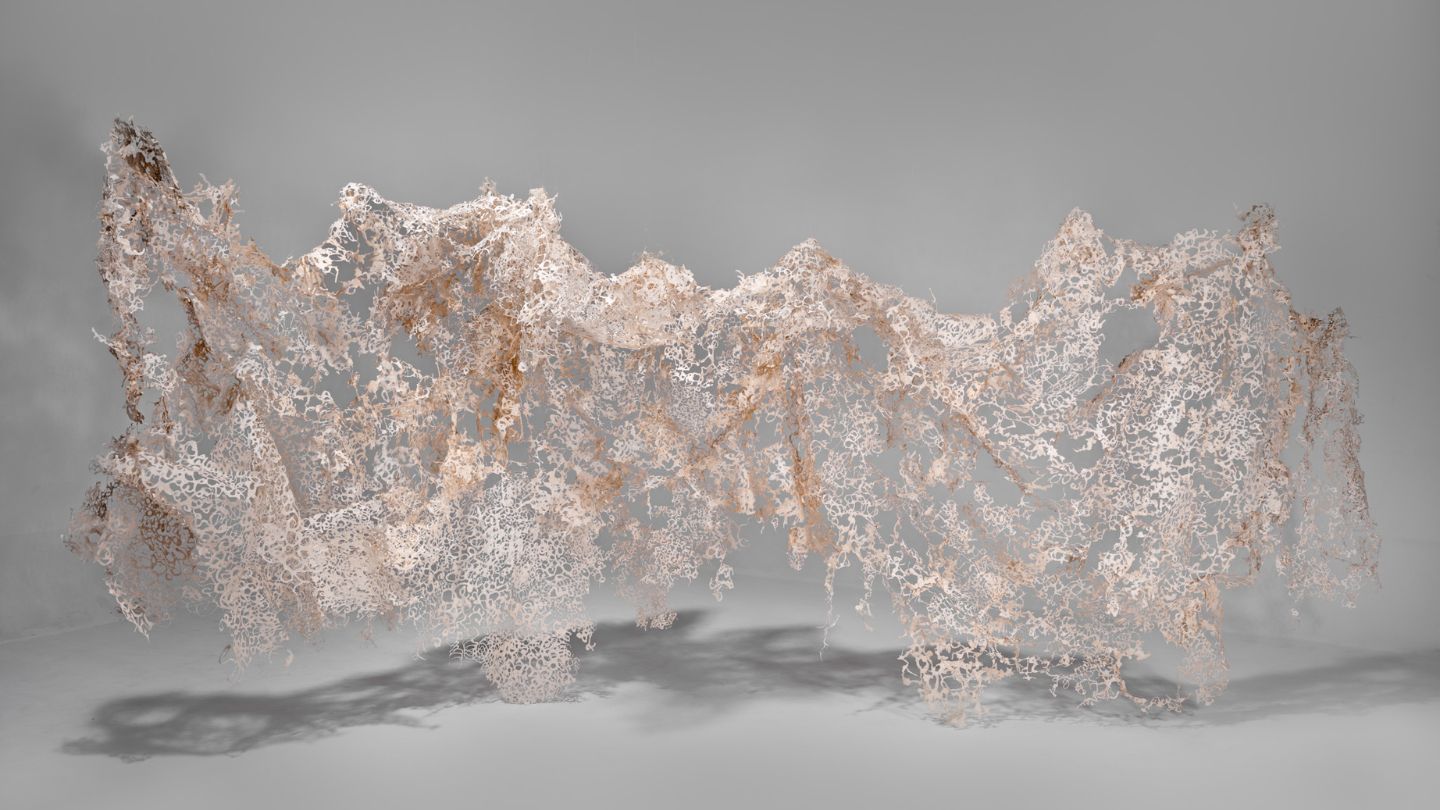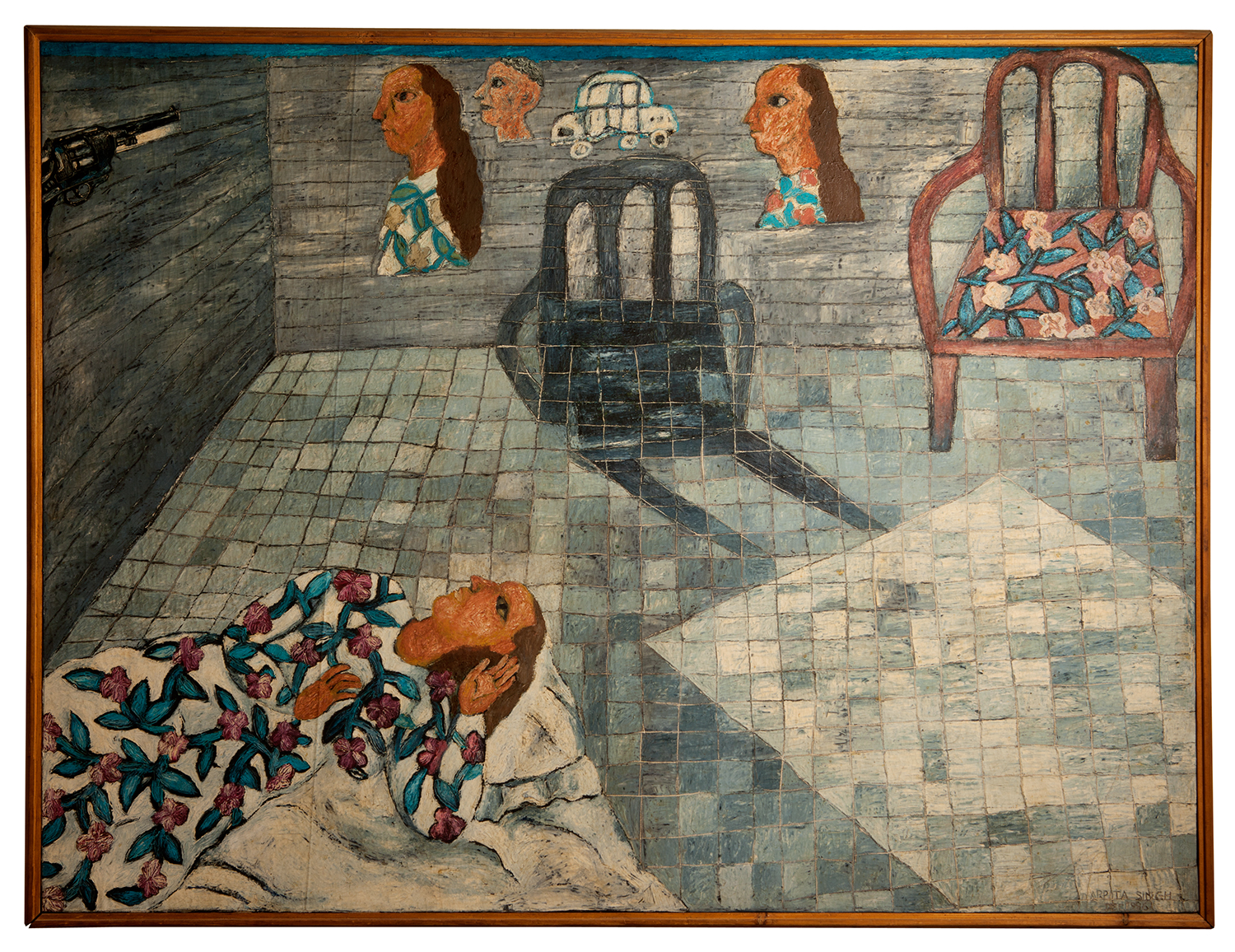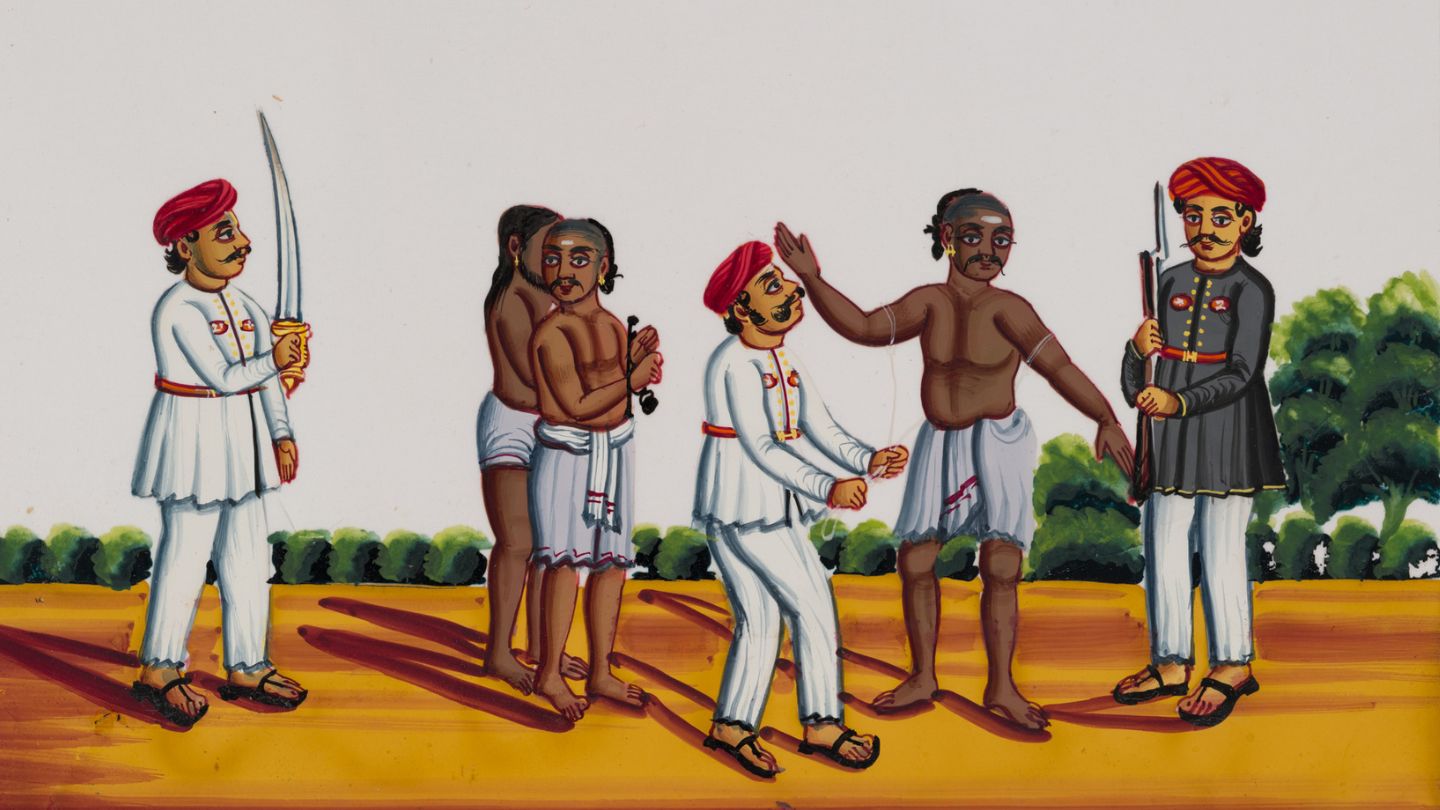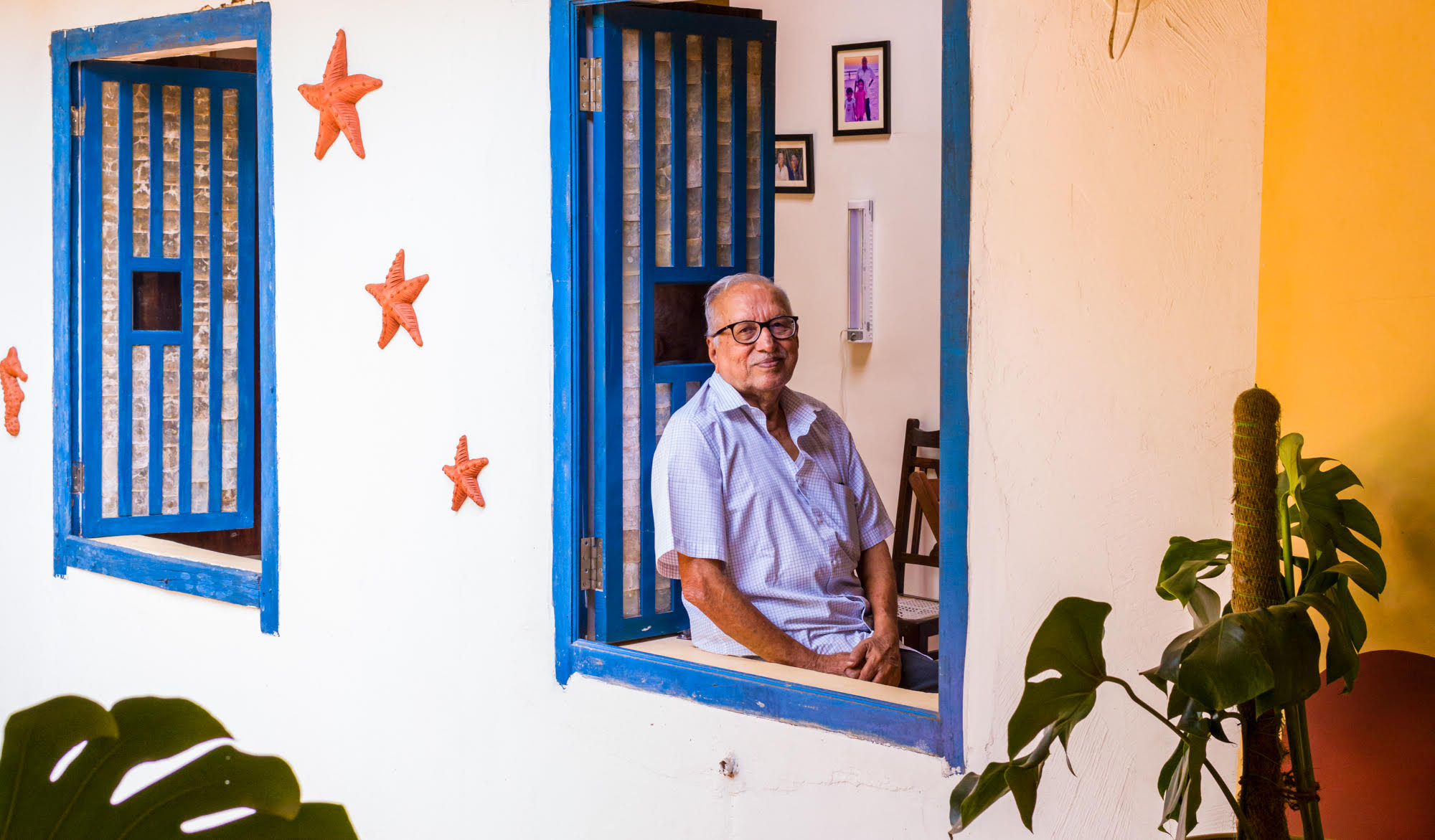Blogs
Exploring Silence through Colour: The Art of Ram Kumar
Anagha Babu
“The outlines of nature fade and dissolve. Colour stands alone, and later finds a relationship with line and form. It is a pause, a silence, some harmony.”
– Ram Kumar, Saffron Art, Remembering Ram Kumar
What happens when in a world saturated with hues, spectacle and limelight-driven narratives of identity, language begins to falter, unable to convey the weight of our innermost feelings?
In such moments, our search for meaning does not disappear, but takes on a different form. It begins to drift gently into the unknown, into silence, into stillness. For Ram Kumar, one of the foremost Indian Modernists, this drift carried him to the world of painting, of abstraction. Colours became the quiet space where what could not be said aloud could still be experienced.
Born in 1924, in the silent hills of Shimla, he was firstly a poet, drawn to the unsaid, the in-between. Eventually, he began to paint, encouraged by those around him, pursuing it seriously after giving up his banking profession. Briefly associated with the Progressive Artists’ Group, Ram Kumar displayed the blending of tradition and modernity that came to define early Indian Modernism. Kumar believed in creating a new Indian visual language, though his concerns remained focused more on the inward and atmospheric than the external and figurative.
In this piece, we will take a close look at three of Ram Kumar’s abstracts – Flower, Landscape, and Untitled– and consider how his works, emptied of overt symbolism, become spaces charged with a kind of mysticism, slowed perception, and stilled thought. These paintings, alongside 6 others, are on view at Shape of a Thought: Letters from Ram Kumar.
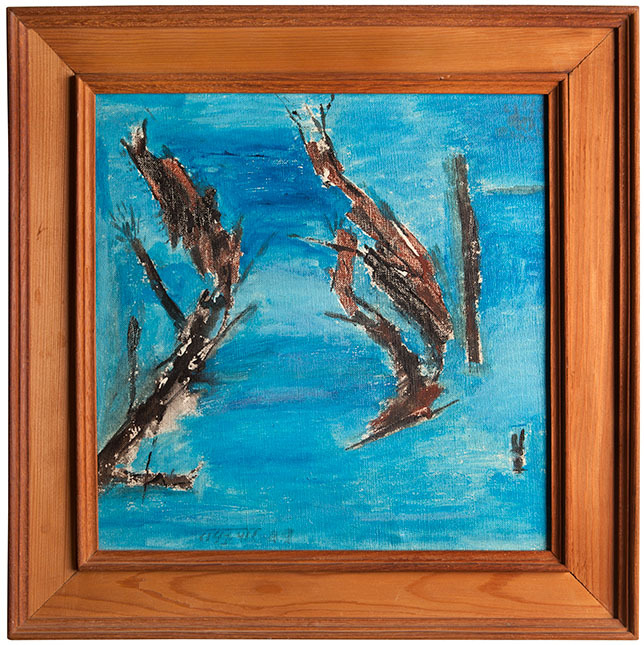
Flower (1989) is a flower not in bloom, but in reverie. The form is not botanical, it is atmospheric, more mood than image. Blue is everywhere, but never quite the same. Here, it does not resemble the blue of sky or sea, but perhaps of distance and nostalgia.
The flower, usually a symbol of vitality in classical figures, here, seems to evoke a sense of melancholia, reminiscent of something that once was. Strokes of burnt umber and black lean towards the right and centre, brittle, and fragmented. But the blue still holds them, softly like a page that surrounds a pressed bloom.
This is not a naturalist’s attempt at representation, but a remembrance of nature filtered through time, memory and feeling. Something in it simmers beneath its apparent stillness for what we see is a flower only by name. It is an echo of one, lingering like a scent in the mind, or an incomplete memory.
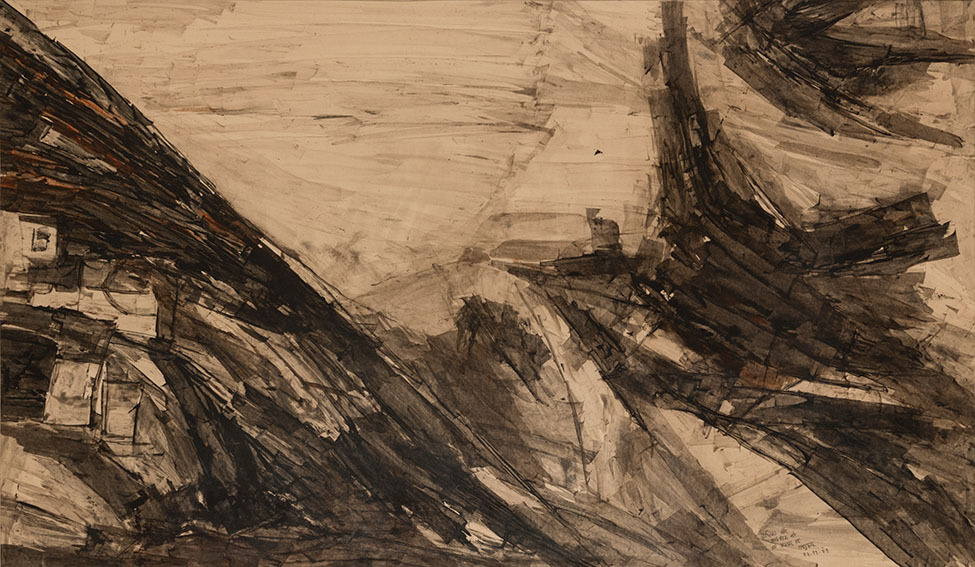
Landscape (1991) appears to be defined by a density and heaviness. There is something ruinous yet structural in the balance of these forms. The greys and black move across the canvas through arcs and jagged strokes. Shades of beige look scraped and layered, almost creating a clearing on the surface. Barely visible strokes of ochre flicker beneath, interrupting the restrained greyscale with an earthy, organic warmth.
This is not the landscape of plein air or the pastoral tradition. One does not find any broad horizons or vistas. Instead, it is a memory of the world, like cities remembered through shadows or ruins buried beneath ashes and time. Landscape paintings have often framed the world but here, Ram Kumar dissolves the frame. He does not give us a space for vision, but sensation, with the painting standing in for the landscape of our inner world.
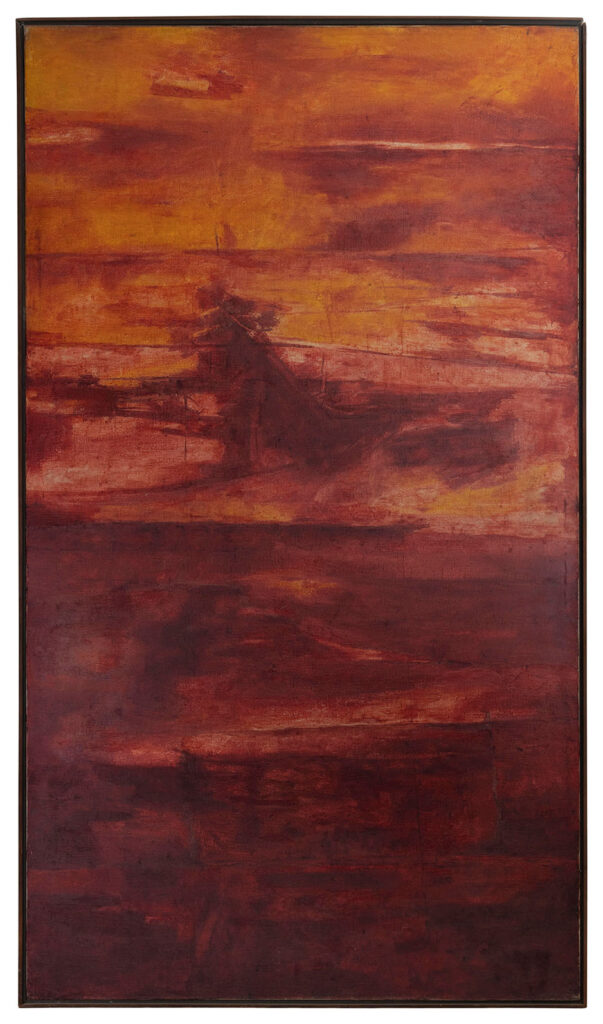
In Untitled (1976), hues of orange glow like a bright sunset, or like warm sunlight filtering through closed eyelids. Reds follow closely, while the wines arrive late, gathering like currents, heavy and hovering, at the corner edges and bottom of the painting. Ochres and ambers float around, blurred and dissolved, just as language dissolves when trying to name a feeling.
The colours in this painting don’t clash, each speaks softly, then recedes to let the next emerge. One may feel as though there is something ancient in this palette, something nostalgic and primal, yet deeply rooted in the present. To stand before such an artwork is to enter into a dialogue with the colours, where they stay with you long after you have stopped looking.
Ram Kumar once described abstracts as an expression of an inner silence, where the world does not expand outward but deepens inward. This painting opens such an inward sea, in which one sinks, a sea made of silent hues, of warmth and of what lingers just beneath the surface.
What abstraction held for Ram Kumar was not an escape, but peace. Rather than viewing abstraction as being incomplete, he came to view it as a fullness. For him, abstraction encompassed that which could not be found in traditional figures, drawing attention to the continuous creation of shared meanings.
His paintings resist any singular narrative. They are fields of pause and rest, where meaning is not predetermined, but must be made. They remain open, ambiguous and contemplative. In a world that demands meaning and speed, Ram Kumar’s paintings offer a way to slow down and dwell within ourselves for a while.
His colours and brushstrokes remove themselves from familiarity, spectacle and feigned clarity. They ask what becomes of art when it does not explain itself.
All artworks discussed in this piece are a part of the exhibition, Shape of a Thought: Letters from Ram Kumar.
